I enjoyed long stays in Trinidad 15 years ago as I did in Havana. It was time for me to reconnect to the charming town and as well as with a couple of old friends.
Trinidad is too famous to be thoroughly presented here. It is the best preserved 19th-century colonial town in Cuba if not in the Caribbean. Trinidad’s golden era was based on sugar fortunes amassed in the neighbouring Valle de los Ingenios throughout the 19th century.

The historical town is superbly located between sea and mountain, enjoying respectively Ancón Beach and Escambray Mountains as natural attractions.
Like Santiago and Baracoa, Trinidad is founded by the Spanish conquistador Diego Velázquez de Cuéllar in the early 16th century. The colonial town stalls until the late 18th century, subject to recurrent piracy acts and poorly connected to the Spanish central authorities in Cuba.
Early 19th century, French settlers relocate from Haiti in Trinidad and in the neighbouring Valle de los Ingenios. They boost the then-burgeoning local sugar production, sparking a prosperous era for Trinidad. Cuba becomes the world’s foremost producer of sugar with Trinidad as the main production spot of the archipelago.
Trinidad’s fastuous economic period ends with the independence wars against Spain in the late 19th century. Sugar production shifts eventually to other Cuban provinces. Since then is tobacco farming and processing Trinidad’s main industry.
Townscape
Soon upon arrival in Trinidad, I head right to the historical centre to climb up the cathedral tower. The Plaza Mayor is an open-air museum of Spanish colonial architecture as well as a cultural hub. Cobblestone streets crisscross the historic area, bordered by brighly-coloured colonial houses with wrought-iron grilles and tiled roofs.





Down there, right in the Plaza Mayor, a wedding celebration. I return quickly to the ground level to get closer. The bride is as beautiful as the charming town of Trinidad ; the groom much less, I am afraid. Despite the stress of her wedding day, she proves to be an outstanding photo model.



In another corner of the Plaza Mayor, a girl is posing proudly in a vintage horse cart to celebrate her 15th anniversary. The latter represents quite a milestone in the life course of a Cuban female and quite a good income source for local photographers indeed. Teenage girls pose usually in a variety of festive or trendy attires in order to fill in their photo album.

Opposite the Plaza Mayor, a theatrical company runs a historical mime play about colonial times in Trinidad. Although speechless, the open-air play fuels much emotion amongst the audience.

So is Trinidad’s Plaza Mayor in an ordinary day. I spend the following days trekking and polishing the cobblestones of various neighbourhoods to circumvent and capture Trinidad’s spirit.
I used up two pairs of shoes during my urban trek in Trinidad. I believe that they died for a valuable photographic cause. The following coups d’oeil are presented to you as speechless as the mime play sketched above, for you to add the words of your choice.







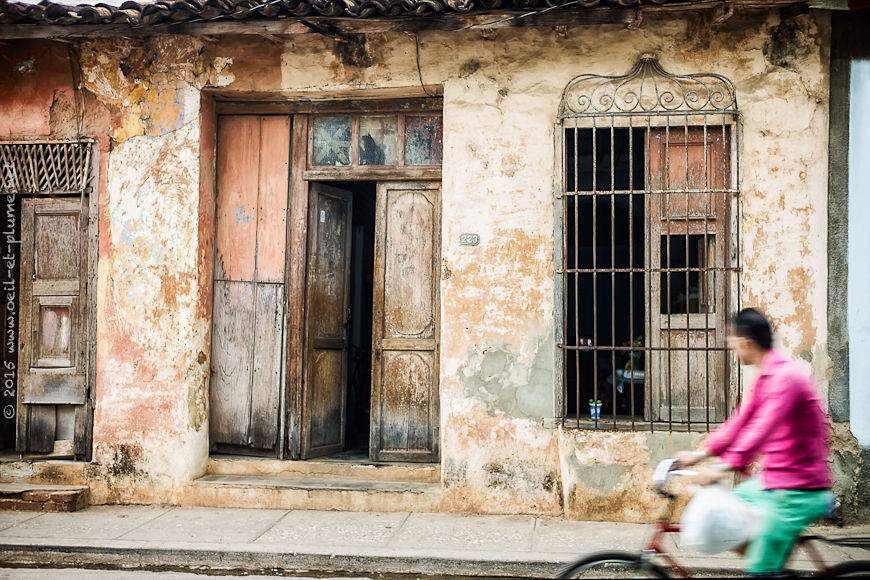
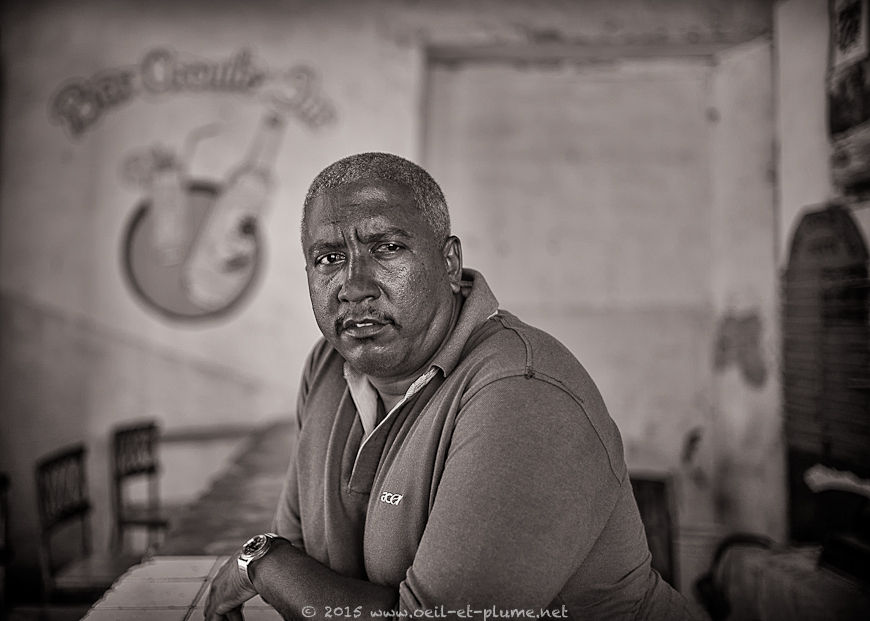


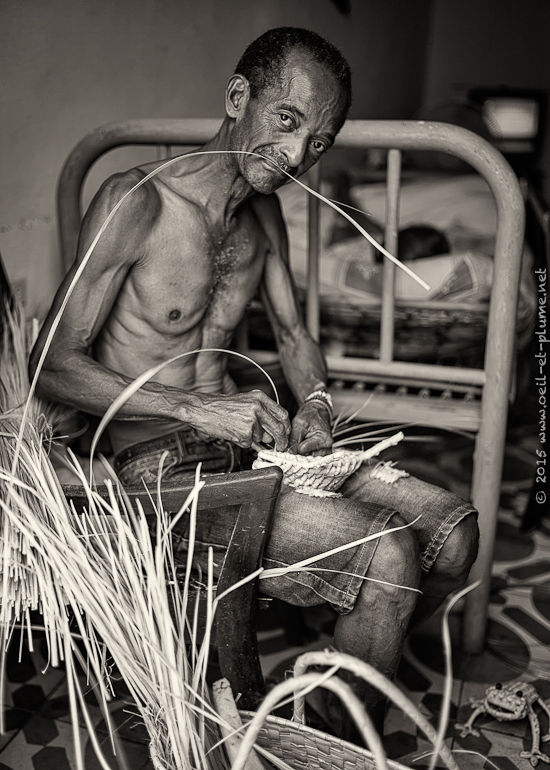





You may read or hear that Trinidad is a lethargic town. Only in apparence, in my view. By daytime, some attention is required to feel the city soul, but it is there. At night, there is no way to sustain the claim of a soporific Trinidad. On the contrary, I wish more towns in Cuba and elsewhere would be as vivid as the festive Trinidad.
Attractiveness is always a two-edged thing. Trinidad’s soul is nowadays somehow at risk. The historical centre of the town has become highly merchandised with a variety of tourism-oriented services. The trend brings growing financial resources into the local and national economy, but also tends to push the local inhabitants out of the historical centre. Without locals residing in the Plaza Mayor area, Trinidad’s spirit would surely fade away.
Valle de los Ingenios
Trinidad is a rural town, historically and today still. Many local farmers shuttle daily to the urban settlement to sell their agricultural outputs and to buy other items.
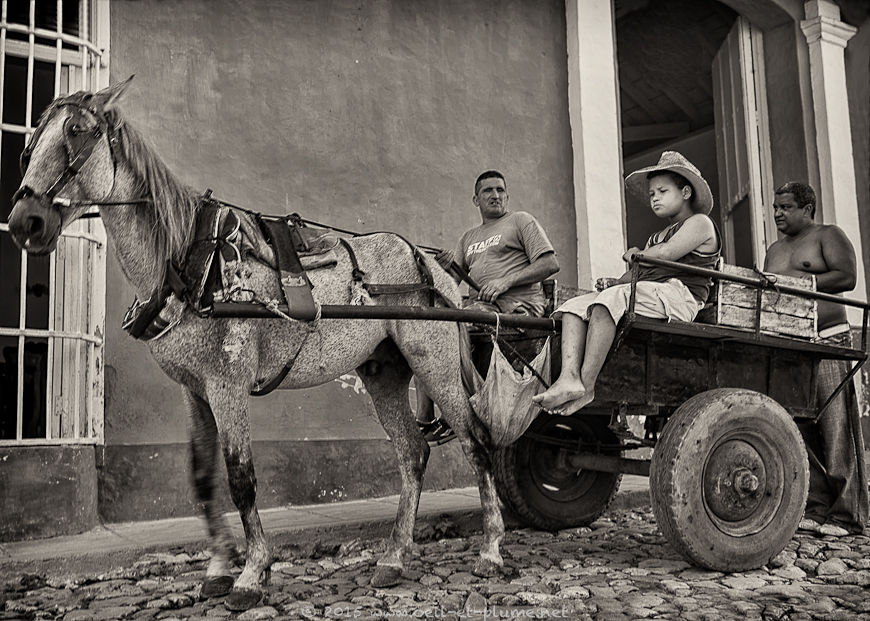

I set off today on bicycle to visit the Valle de los Ingenios – a set of three interconnected valleys near Trinidad. My journey was long overdue considering the historical importance of Trinidad’s backyard.


My bike suffers a flat tire after only a few kilometers. A local farmer offers me his help to fix the puncture. With no specific tool other than a multipurpose handpump, he locates and repairs the damage in a few minutes. The ad hoc fix holds well for the rest of my cycling day. Amazing demonstration of resourcefulness and helpfulness, I think.
In the 19th century, there were up to 70 sugar cane mills operating in the Valle de los Ingenios, with over 30,000 slaves of African origin working in the mills and on the nearby sugar cane fields. Short of labour force, the Spaniards are the first Europeans to import African slaves in the New World early 16th century. They continue doing so until the 19th century despite the official abolition of slavery by the Spanish Crown.



Not much sugar mill infrastructure is left today. The best preserved building is the emblematic Iznaga Tower, constructed by the sugar producer Alejo Iznaga Borrell in 1816. Providing a 360° panoramic view from all floors, the tower aims primarily at regulating and monitoring the slaves’ workforce. On top, a bell rings the start and the end of the daily work for the slaves, as well as the morning, midday and afternoon prayers. It also alerts in case of fire or slave escape.
Whereas the local climate and soil well suit the requirements of sugar cane farming, the transportation of sugar remains challenging. Freshly-produced sugar spoils easily in a tropical country. A railway line is built in the late 1880’s, connecting the Valle de los Ingenios to Trinidad and further down to the coastal port of Casilda. The complex piece of civil engineering is used only during a few decades until the decay of the sugar industry in the region. Today, the railway skeletton rusts slowly but surely.


I enjoy much interacting with local farmers, to hear them speaking about their lives, their joys and their concerns. Once the ice broken, they prove to be quite good photo models as well.

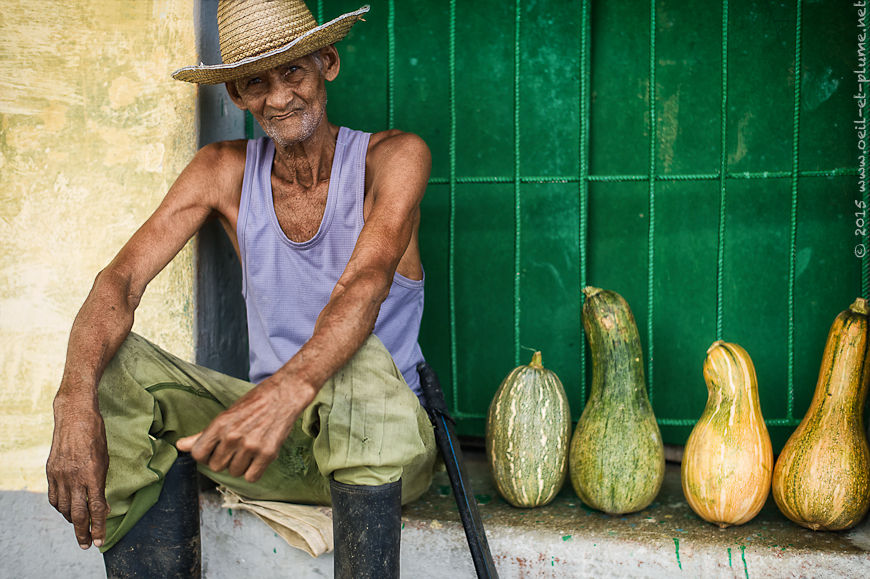
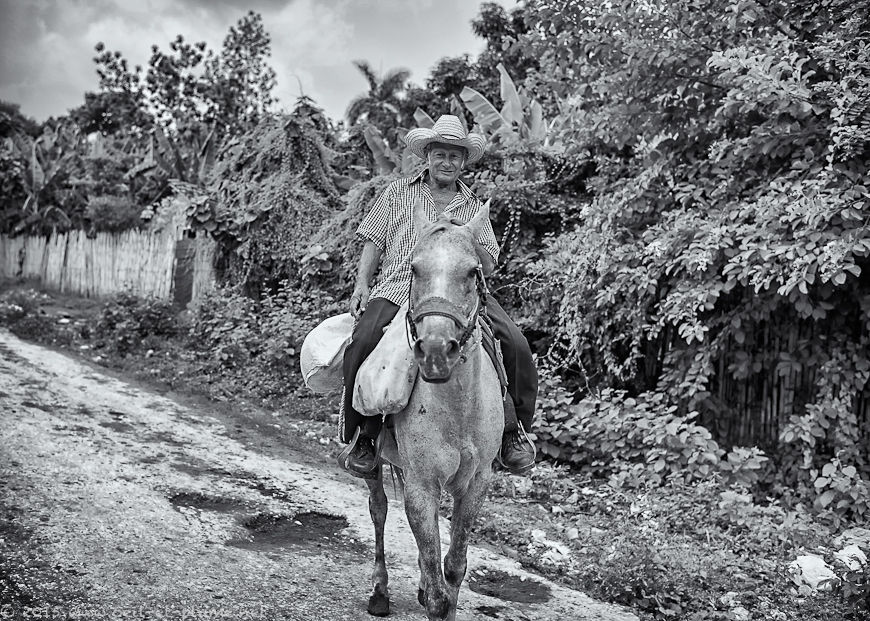
I enjoy even more meeting again with my Cuban family and particularly with my ‘papa’ Juan, who hosted me for several months 15 years ago. Time has passed but friendship has remained intact. That’s also part of Trinidad’s soul. You have certainly understood now why and how much I love Trinidad.

Cheers,